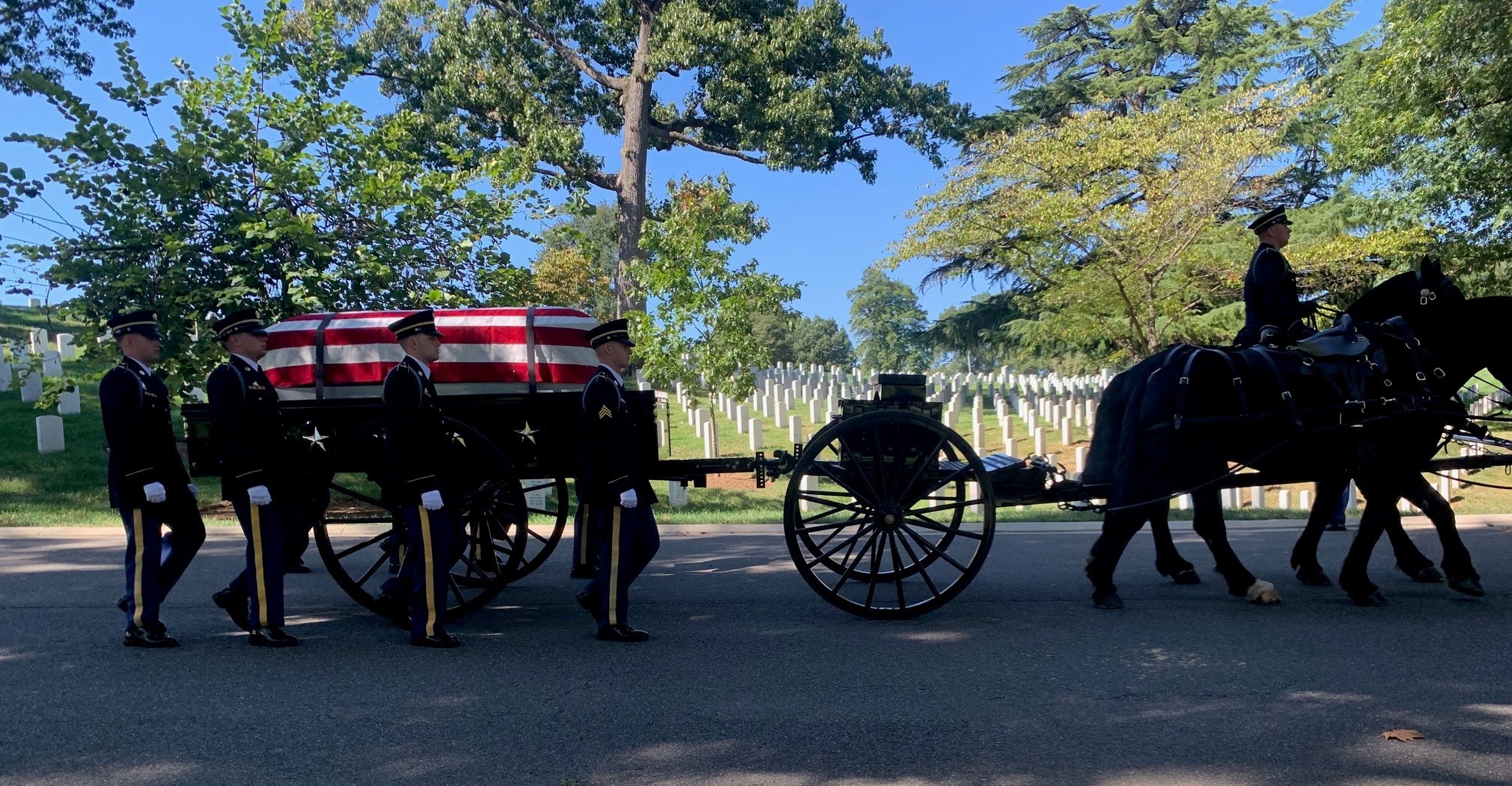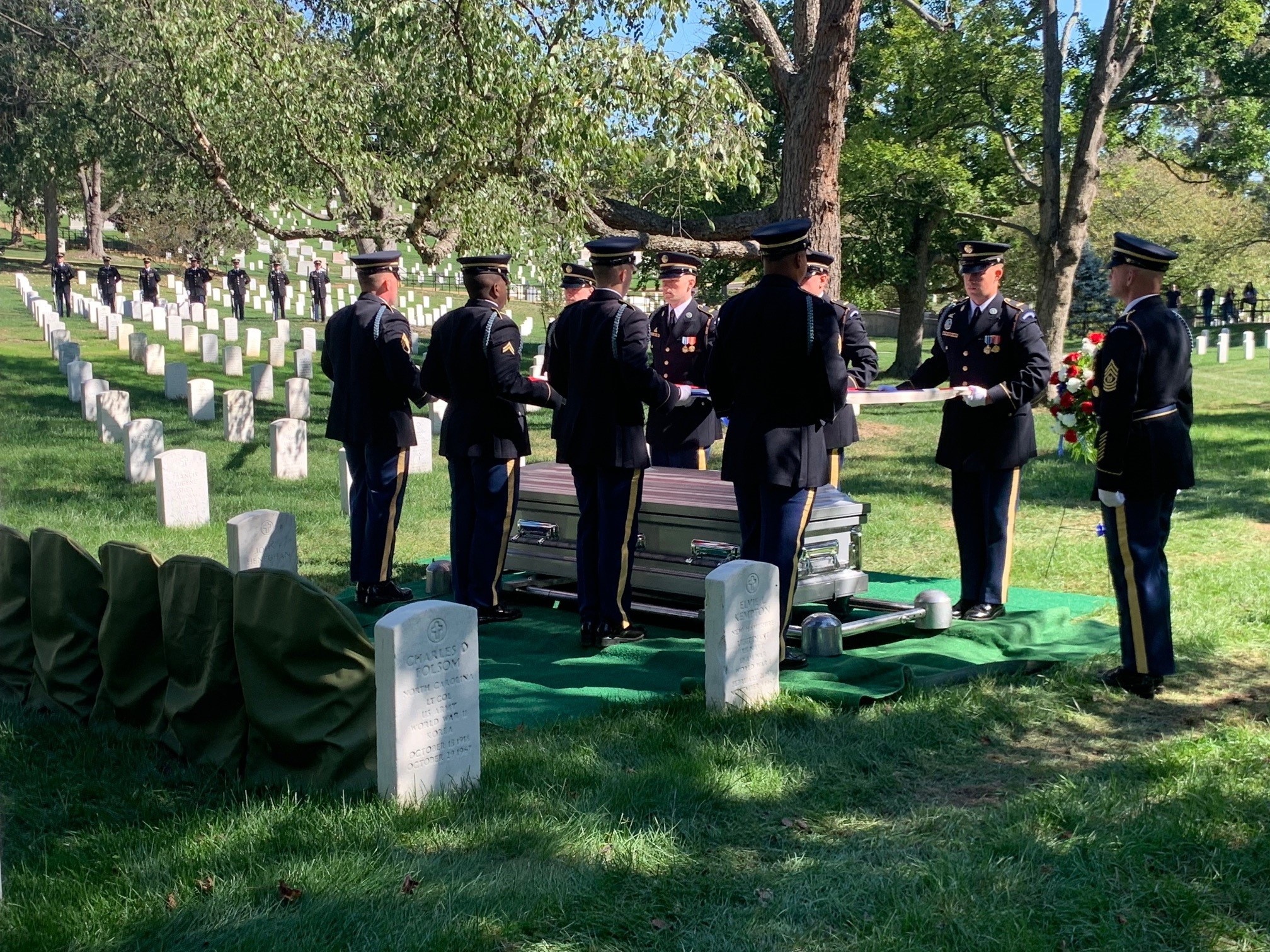
“Fighters at 6:00 high!” Tech. Sgt. Lynn M. Farnham shouted to the nine men in his B-17 “Flying Fortress” bomber over Germany. Those were the last words they heard from the 20-year-old top turret gunner/engineer. As he alerted the crew, shrapnel from a 20mm shell tore into his legs. Soon, the aircraft’s pilot gave the bail-out order and Farnham was last seen slumped behind Lt. Bill May’s co-pilot seat. May had also been killed. The other eight men successfully escaped the stricken bomber before it crashed outside of Langquaid, Germany.
On Feb. 25, 1944, during World War II, the B-17 had been part of a 15th Air Force raid on an aircraft factory in Regensburg, Germany. The eight men who escaped the bomber were captured and survived as prisoners of war. Farnham was listed as missing in action, yet his country never gave up searching for him. More than 80 years later, on Oct. 1, 2025, Farnham received full military funeral honors with escort at Arlington National Cemetery.
After the war, members of the American Graves Registration Command disinterred a set of unidentified remains from the nearby village of Paring but were unable to identify them. The remains were later buried, under an “Unknown” marker, in the Lorraine American Cemetery in France. They remained there until the Department of Defense MIA/POW Accounting Agency (DPAA) investigated the crash site in 2013 and 2019, disinterred the unknown grave in 2023 and ultimately identified the remains as Farnham’s.
DPAA officials contacted Farnham’s younger sister, Marian Candee, in Boonville, New York, to tell her they were trying to identify her brother. She was shocked. “I didn’t believe there were any remains to be found, because the plane blew up,” she said. She provided a DNA sample, even though she thought it was futile. When DPAA called back to tell her they made a match, it only compounded her shock. “I couldn’t function very well because it was such a surprise,” she said.
At the funeral service, U.S. Army Chaplain (Capt.) Shannon Demoret told more than 30 family members and friends that Farnham had “honorably served” during the war. “Let it be known that he is a recipient of the Purple Heart,” she added, “having shed his blood for our nation.”
Candee remembered her older brother as a calm, gentle man who often wrote to his mother while he served overseas. “My mother was devastated by his loss,” she remembered. After learning that she could bury her brother’s remains anywhere, she decided on Arlington National Cemetery. “I just felt that he needed to be here,” she said, “and it was an honor for him to be here.” For Candee, the service brought closure on her brother’s death.
Farnham’s niece, Janet Bednarczyk, the daughter of his oldest brother, also attended the funeral. All four of her grandmother’s sons joined the military during the war; only Farnham failed to return home. “My grandmother always believed that he would someday come home,” she said as her eyes teared up. “And now he is home.”
